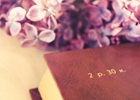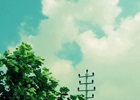新年好英文怎么说
节日,是指生活中值得纪念的重要日子。是世界人民为适应生产和生活的需要而共同创造的一种民俗文化,是世界民俗文化的重要组成部分。下面跟着小编来看看新年好英文怎么说吧!希望对你有所帮助。
新年好的英文:
Happy New Year!
参考例句:
Happy New Year to you.
新年好。
happy是什么意思:
adj. 高兴的;使人高兴的;情愿的;放心的;幸运的`;恰当的
Health is happiness
健康就是幸福
Content is happiness
知足常乐
Then Zara was happy.
然后扎拉就高兴起来了。
new是什么意思:
adj. 新的;现代的;初次的;初见的
That news will keep.
那个消息留待以后再宣布。
The venture was new.
这是一次新的冒险。
The news was flashed to Washington and then to New York.
这消息被火速发往华盛顿,然后发往纽约。
year是什么意思:
n. 年;学年,年度;年级学生;年龄;时期;很久;一年时间
Year succeeds to year.
年复一年。
This year is a banner year for crops.
今年是个丰年。
Year after year went past.
一年又一年过去了。
新年的由来简介英文
History of the Spring Festival
It is unclear when the beginning of the year was celebrated before the Qin Dynasty. Traditionally, the year was said to have begun with month 1 during the Xia Dynasty, month 12 during the Shang Dynasty, and month 11 during the Zhou Dynasty. However, records show that the Zhou Dynasty began its year with month 1. Intercalary months, used to keep the lunar calendar synchronized with the sun, were added after month 12 during both the Shang Dynasty (according to surviving oracle bones) and the Zhou Dynasty (according to Sima Qian). The first Emperor of China Qin Shi Huang changed the beginning of the year to month 10 in 221 BC, also changing the location of the intercalary month to after month 9. Whether the New Year was celebrated at the beginning of month 10, of month 1, or both is unknown. In 104 BC, Emperor Wu of the Han Dynasty established month 1 as the beginning of the year, where it remains.
Mythology about the Spring Festival
Hand-painted Chinese New Years poetry pasted on the sides of doors leading to peoples homes, Lijiang, Yunnan, China.According to legend, in ancient China, the Nián (年) was a man-eating beast from the mountains (in other versions from under the sea), which came out every 12 months somewhere close to winter to prey on humans. The people later believed that the Nian was sensitive to loud noises and the colour red, so they scared it away with explosions, fireworks and the liberal use of the colour red. These customs led to the first New Year celebrations. Guò nián (simplified Chinese: 过年; traditional Chinese: 過年), which means to celebrate the new year, literally means the passover of the Nian.
Editor: No specified pictures about this beast as it is only an imaginary animal, you can draw one and send it to us:) Just show your imagination!
Days before the new year
On the days before the New Year celebration Chinese families give their home a thorough cleaning. There is a Cantonese saying "Wash away the dirts on nianyiba"(年廿八,洗邋遢), but the practice is not usually restricted on nianyiba(年二八, the 28th day of month 12). It is believed the cleaning sweeps away the bad luck of the preceding year and makes their homes ready for good luck. Brooms and dust pans are put away on the first day so that luck cannot be swept away. Some people give their homes, doors and window-panes a new coat of red paint. Homes are often decorated with paper cutouts of Chinese auspicious phrases and couplets.






